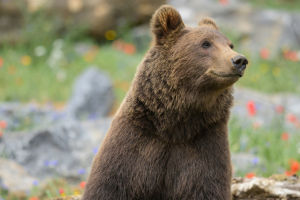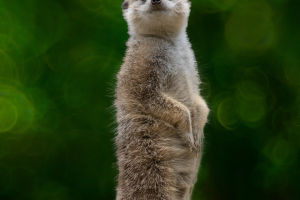When we think of lions, most of us picture the mighty, roaring male with a thick mane. However, the real power within a pride lies with the females. Lions live in a matriarchal society, meaning that the females are the heart and soul of the group.
They are the ones who make critical decisions, including hunting and defending their territory. Males, on the other hand, have a more transient role, responsible mainly for patrolling the territory and protecting the cubs.
The roles in a pride are well-defined, but there are also some surprises when it comes to the behavior of these fascinating creatures.
The Role of Female Lions in the Pride
We often assume that male lions are the leaders, but this is not the case. In fact, the pride is led by female lions, who stay with the group throughout their lives. They form close-knit bonds with each other, working together to protect their territory and raise their young. Females are primarily responsible for hunting, but they also manage the expansion and defense of their territory. Male lions, in contrast, are more likely to leave the pride once they reach adulthood, either to challenge another male or due to aging.
The territory of a lion pride is carefully defined by the females, and they actively patrol and defend it. Interestingly, while males don’t have their own territory before joining a pride, they will defend the pride’s territory once they become part of it. Female lions also play a role in selecting males for the pride. Though males often enter a pride by defeating the resident males, if the females favor a particular male, they will ensure that he stays. In some cases, they will even help him fend off rivals.
Lion Prides: Size, Territory, and Behavior
We might imagine a pride as being large and bustling, but the size of a pride can vary greatly. Typically, a pride consists of anywhere from 3 to 50 lions, with a single adult male. In larger prides, there may be multiple males, but the core of the pride is always the females. Once males reach adulthood, they are usually driven out of the pride, while females remain.
In certain areas of Kenya, particularly in the Samburu National Reserve, researchers have observed a unique group of lions that lead a solitary existence, much like tigers. These lions only come together to mate, with the males hunting alone and the females raising their cubs independently.
The Life of a Male Lion
We often associate male lions with power and dominance, but their lives are far from secure. Once males are expelled from their birth pride, they embark on a solitary journey, hunting alone and seeking new territories. Young males may form coalitions with other males to increase their chances of success when challenging for dominance. These coalitions may roam across vast distances, often reaching areas far from their birthplaces. Males typically don’t gain full control of a pride until they are about six years old or older.
When a dominant male grows weak or old, younger males will challenge him for control. If the challenger is successful, the older male may either flee or die in battle. Sometimes, newly dominant males will eliminate the cubs in the pride to bring the females into estrus, ensuring that they can mate and pass on their genes.
A Pride’s Territory
We often hear about the vast territories of lions, but how large is their domain? A lion pride’s territory can range from 20 to 400 square kilometers, depending on the size of the pride and the availability of prey. Lions use scent marking, and vocal calls to communicate the boundaries of their territory. The larger the pride, the more territory they need to sustain themselves, as they rely on a sufficient supply of prey to thrive.
Desert Lions: A Unique Adaptation
We typically associate lions with grassy plains, but desert lions have adapted to their harsh, arid environments. Unlike their counterparts on the savannas, desert lions are smaller, with dense fur that helps them withstand the cold desert nights. These lions live in smaller prides, usually no more than 15 individuals, and their territories tend to be much larger due to the scarcity of prey. Remarkably, desert lions can go without drinking water for long periods, obtaining most of the water they need from the animals they hunt.
Lion Reproduction and Mating
When it comes to reproduction, we see that male lions may have some protection due to their position in the pride, but they can only mate with a female if she accepts them. When a female lion is ready to mate, she will lie down and allow the male to mount her. Interestingly, female lions tend to prefer males with dark, thick manes, as these are seen as a sign of strength and vitality. This is similar to the way peacocks use their colorful feathers to attract mates.
Females typically give birth to two to four cubs after a pregnancy lasting about three and a half months. Cubs will nurse for up to six months, after which they stay with their mothers for about two years. Both male and female lions reach reproductive maturity at different ages—females around three years old, and males at around five years. However, not all cubs survive into adulthood. Studies have shown that only about one-third of lion cubs live to see their 20th birthday.
The Lifespan of Lions
While we often associate lions with strength and dominance, their lives can be short and perilous. Males rarely live beyond 12 years, as they are often killed or driven out by younger males before they can reach old age. In contrast, females can live much longer, with lifespans ranging from 15 to 18 years. Some lions in captivity have even been known to live up to 34 years, a testament to how different their lives can be in the absence of the challenges they face in the wild.
We hope this article has given you a deeper understanding of the unique and fascinating lives of lions. If you’re intrigued by these magnificent creatures, share your thoughts with us in the comments below!
Lionesses protecting cubs
Video by Pondoro Game Lodge


